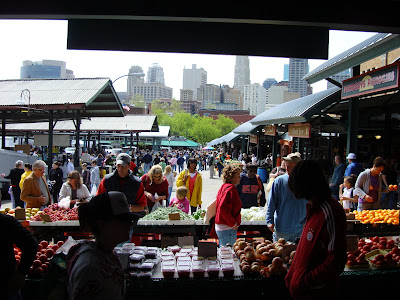"The Watkins Woolen Mill is among the best preserved example of a mid-19th century woolen mill in the United States. Its variety of machinery for preparing, spinning, and weaving--some of it modified during its life at the mill to improve its performance--presents an unsurpassed cross-section of textile technology at that time and is the finest collection of early textile machines in situ in North America. The mill was designed and built by Waltus L. Watkins (1806-1884), a machinist and master weaver from Frankfort, Kentucky."

Ken next to the mill's wood-fire boiler. The boiler provided 100-pounds of pressure to power the mill's 60-horsepower slide-valve steam engine that ran the mill's looms and machines.

During the process, wool is fed into a picker, which prepares the wool for carding by pulling it apart into small, fluffy bits.


















































